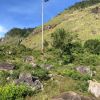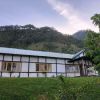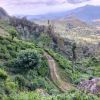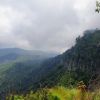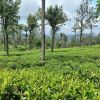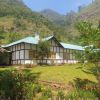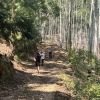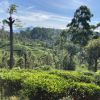The Pekoe Trail Stage 14: St. Catherine (Lipton Seat) To Makulella
Length9.2 kmElevation gain131 mRoute typePoint to pointDiscover this 9.2-km point-to-point trail near Bandarawela, Badulla. Generally considered a moderately challenging route, it takes an average of 3 h 11 min to complete. This trail is great for backpacking, hiking, and walking, and it's unlikely you'll encounter many other people while exploring.This stage starts at St. Catherine, situated in the upper division of Nayabedda Tea Estate, the second-highest starting point of all The Pekoe Trail stages. Although the total length of this stage is shorter than others, this stage is packed with all the magic of the full trail: villages, places of worship, tea plantations, farms, historic bungalows, forested areas, and endless views of the mountains and valleys below. For those considering doing it in reverse, it is a climb. This is partly the reason the stage works very well as a shorter segment. The weather in the upper portions of the Nayabedda Estate is unstable. Temperatures can drop suddenly and considerably when the clouds set in. When the sun is shining, it’s a strong tropical sun, so a hat and sun cream are advised. St. Catherine is a tea plantation workers' village sitting high up on a plateau, well-known because of Lipton Seat, the place from where Sir Thomas Lipton liked to survey his tea empire. The beginning crosses the plantation village of St. Catherine and the village homes that surround the town. Every bit of land around every village home is used for cultivation, be it carrots, beans, leaks, or cabbage. Much of the produce is then sold by the local villagers at the markets of Haputale and Bandarawela. Next, the path enters a short patch of Eucalyptus forest and then begins a gradual, switchbacked descent towards the edge of the plateau. It passes by more village homes, cultivations, and tea. Leaving the hamlet behind on the right-hand side and after a short patch of forest, the trail gives way to one of the most spectacular locations on the entire Pekoe Trail: an old and hollow pine tree the local villagers come to honor and respect. “As you sit on the hillside, or lie prone under this great tree, the great door, that does not look like a door, opens” – Stephen Graham, The Gentle Art of Tramping, 1926. The highest mountain ahead is called Namunukula, which in Sinhala means "Nine Peaks". During the Ming treasure voyages of the 15th century, the Chinese fleet led by Admiral Zheng made use of this geographical feature in their navigation to Sri Lanka, as the mountain is the first visible landmark of Sri Lanka after departing from Sumatra. As hikers descend carefully, the path theta re on is an old British engineered estate road built for the transportation of tea leaves to the factory below. The gradient is gentle. One loses count of how many times the trail bends as it zig-zags down. Soon there is a small cabin that can serve as respite from the sun, wind, or rain. Up ahead, there is a wooden shelter beside the entrance to a Pe
Listing Details
Telephone
0000-00-00
Website


